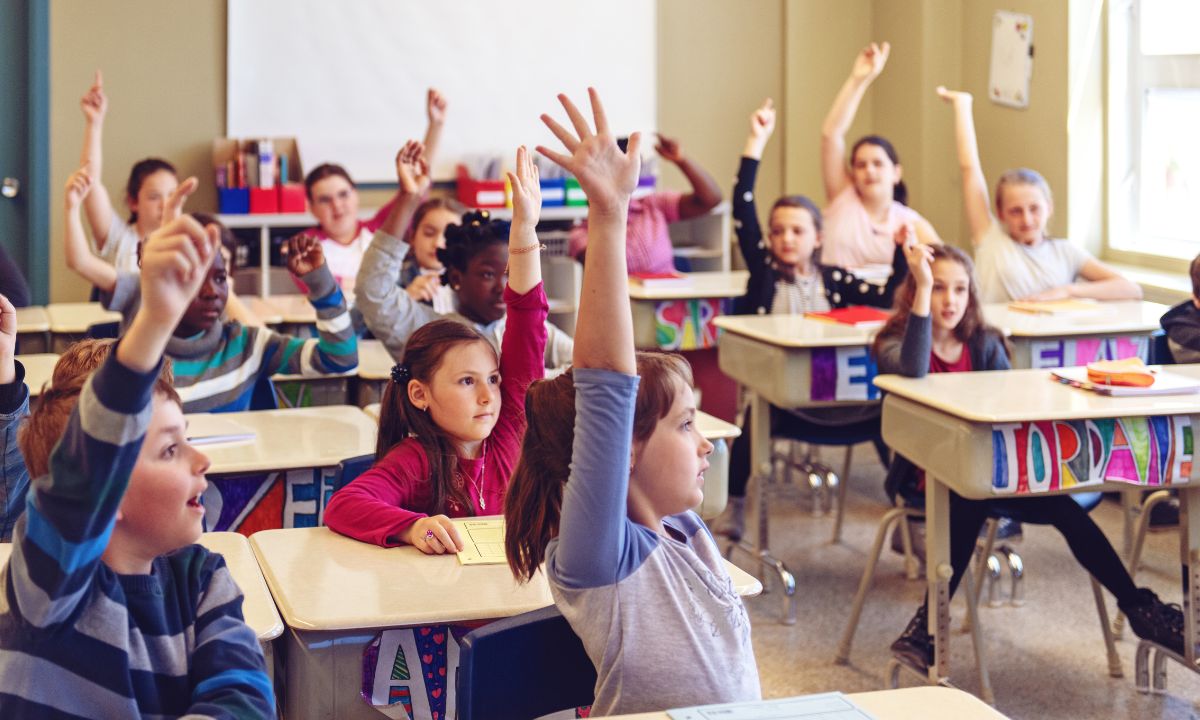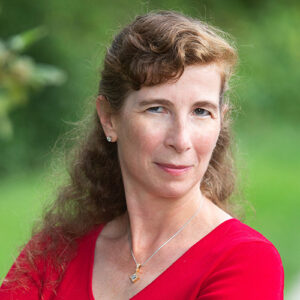Parents Wonder: Where Will NYC Get More Teachers, Space to Make Smaller Classes?
Adams: Survey of families finds many are enthused about smaller class sizes in theory but very worried about how they would be implemented in practice

Get stories like this delivered straight to your inbox. Sign up for The 74 Newsletter
Thanks to a smaller-class-size mandate, by September 2027, New York City classes will be capped at 20 students in kindergarten through third grade, 23 in fourth through eighth grade and 25 in high school.
This will necessitate the hiring of 3,700 public school teachers, as well as the creation of hundreds of new classrooms within already overcrowded buildings. Parents have concerns about how the process will play out.
Many absolutely see the benefits of smaller classes.
“At a school with much larger class size … teachers don’t have the time to teach the complex writing and reasoning skills students need,” says dad Thomas Fiorella Jr. “I don’t know that my public school student wrote more than a few pages of expository writing all year in their public school with 33 kids per class.”
The issue of extra space looms large, however. Smaller classes require distributing the same number of students across more classrooms, and acquiring more supplies, from desks to chairs to books to science kits, to to stock those classrooms.
“I am optimistic the smaller class sizes will benefit kids academically and socially, though how are schools going to allocate space for additional classrooms?” an anonymous parent asked. “Most of the rooms are already in use. Are they going to be the trailers? If so, are those going to be parked in front of the school in the yard? How are they going to allocate class times for each group to have specials including music, science, STEAM, art, gym, as well as the enrichment activities of dance, chess, drama?”
“There isn’t additional … spending in the school budgets at the moment” for equipment, etc., admitted the PTA president of an Upper West Side school. “Our school has some unused space that will be brought online and some previously used furniture that will be used again.”
But not all schools have the luxury of repurposing unused spaces.
“We don’t have the space to split up classrooms,” fumed a parent of a child attending TAG Young Scholars in East Harlem. “To get enough classrooms, we are considering destroying specialty classrooms (e.g. music, science, etc.) to convert them into general population classrooms — so goodbye, high-quality specialty classes (either completely or severely altering their curriculum quality). It’s not like the music teacher can carry all instruments from class to class. It’s shocking to realize how incompetently this policy change was shoved down from the top.”
In December, Mayor Eric Adams promised extra funding to schools that submitted a detailed plan for shrinking class sizes by adding new teachers. In May, 741 schools learned they’d been approved to begin hiring.
However, not all schools took advantage of Adams’ offer, opting instead to shrink existing classes by not replacing students who leave and admitting smaller cohorts moving forward.
A parent in Queens District 24 explained that their school “decided not to go for the extra teacher funding because they would have to get rid of the science, art and music classrooms — which seems so wrong! Something isn’t working here. Why would anyone want to cut art, science or music from schools to get an extra teacher?”
As for the 741 schools that did receive funding to hire additional teachers, parents expressed trepidation that hiring so many new ones all at once means most will be inexperienced.
“I am thrilled there’ll be smaller class sizes, though I do have concerns as to the qualifications of these new teachers and where they will be sourced from,” worried another parent who asked to remain anonymous. “Last year, my daughter had a first-year teacher, and it was not a successful year.”
Still other parents fear there simply won’t be enough teachers to go around, experienced or otherwise, considering that NYC is already in the midst of a teacher shortage.
“At our (school leadership team) meeting, the principal shared that my daughter’s middle school received funding to hire six new teachers, a tall order for any school,” wrote Jessica Schilling, Brooklyn mother of two. “No one I know wants to work in public schools right now. Later that week, I learned my son’s high school, which has more than twice the student population of my daughter’s, was also hiring. It feels like a citywide scramble for a shrinking pool of talent.”
Within-district competition for teachers is not a new phenomenon. Decades of research has focused on the issue of teachers abandoning low-performing, usually poorer, schools for high-performing, usually wealthier ones. This leaves the neediest students with the least experienced teachers and, sometimes, no teachers at all.
With popular schools like Beacon HS, Bronx Science HS, Brooklyn Latin HS and Booker T. Washington MS, among many others, putting out the call for more teachers, it stands to reason that some of those currently employed at less selective schools will jump ship, leaving their students in a lurch.
“We recognize concerns that experienced teachers may be attracted to higher-performing schools, leaving underserved schools with less experienced educators,” conceded Jenna Lyle, deputy press secretary at the city Department of Education. “Addressing this is a priority for us, and our strategic efforts, including targeted recruitment, retention incentives and professional development, are specifically designed to ensure that all schools — especially those in high-need areas — have access to high-quality, experienced educators.”
Those strategic efforts include an alternative certification program, where seven weeks of training over the summer qualifies candidates to begin work in the fall. (Though it also requires some time travel, as “Training begins in June 2025 and concludes in early August 2024.”) It seems difficult to imagine that a few weeks of theoretical instruction, without any classroom experience, would be enough to instantly create the “high-quality, experienced educator” promised in Lyle’s statement, much less dozens of them in one swoop. (It is, in fact, one of the main criticisms leveled against organizations like Teach for America and charter schools.) It appears equally unlikely that principals at high-performing schools would prefer to hire these new teachers over more experienced ones, leaving the inexperienced educators to be placed, as traditionally happens, in the weaker, neediest classrooms.
“The biggest problem NYC and other urban school districts have is not attracting candidates, but keeping them over time,” counters Leonie Haimson of Class Size Matters. “There are many surveys showing class size is a key component for what teachers are looking for in a job … and several studies show lower teacher attrition with smaller classes. This means in the medium to long term, all students, but especially the ones in the highest-need schools, will benefit from more experienced and effective teachers.”
Whether that proves to be true in the medium to long term has yet to be seen. In the short term, Lyle promises, “We are working diligently with our union partners, educators and staff to support schools as they staff up ahead of next school year and ensure every student has access to the quality education that they deserve.”
The majority of parents who replied to the query I posted on my 4,000-plus-member NYC School Secrets mailing list were enthused about the concept of smaller class size in theory, but very worried about how it would be implemented in practice. After decades of broken promises ranging from pandemic school closures to expanding gifted-and-talented programs to a flip-flopping cell phone policy, NYC families are not feeling confident that the department will follow through on its latest pledge, or that it’s even mathematically achievable to begin with.
Get stories like these delivered straight to your inbox. Sign up for The 74 Newsletter

;)
